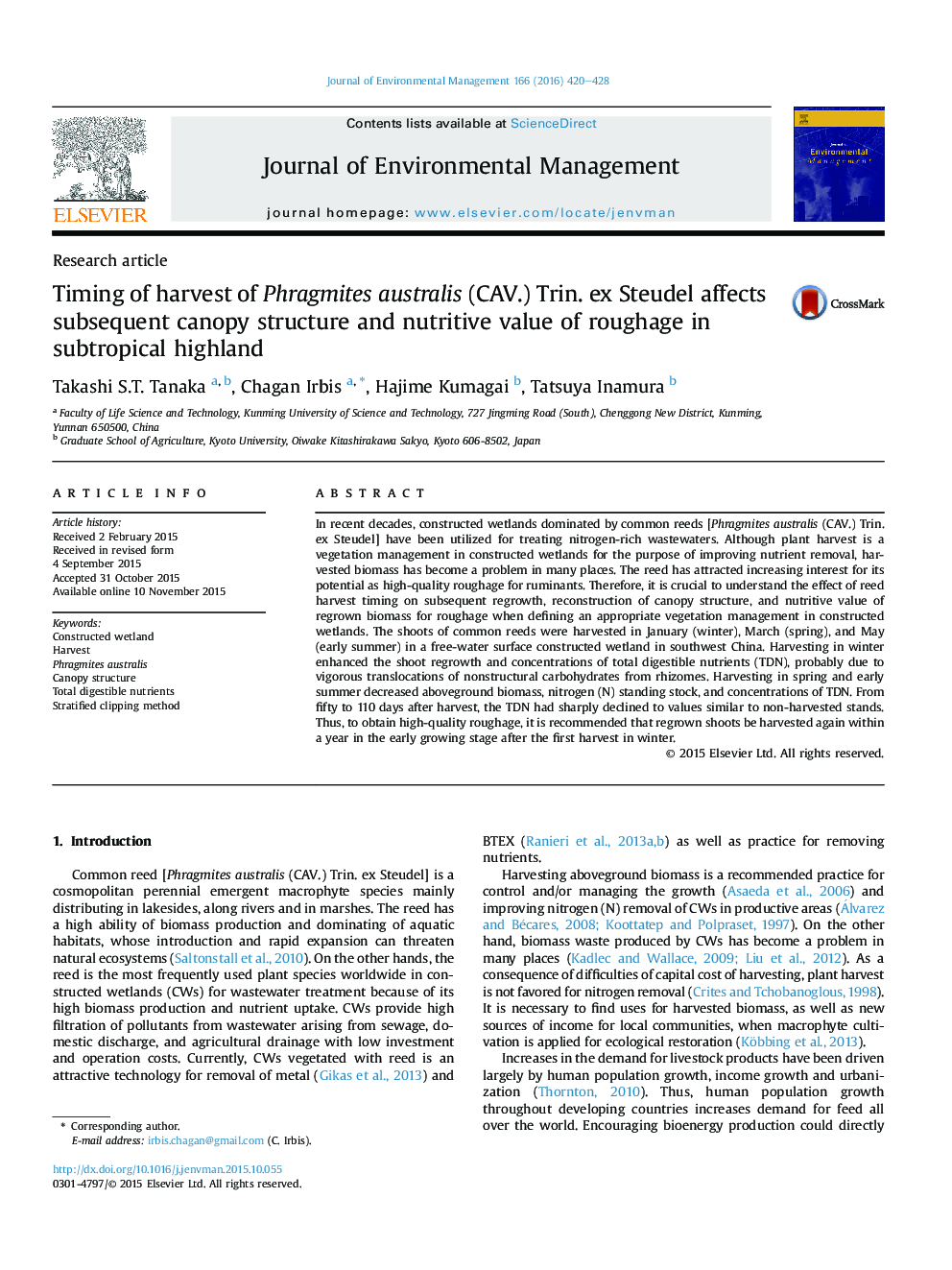| Article ID | Journal | Published Year | Pages | File Type |
|---|---|---|---|---|
| 7481397 | Journal of Environmental Management | 2016 | 9 Pages |
Abstract
In recent decades, constructed wetlands dominated by common reeds [Phragmites australis (CAV.) Trin. ex Steudel] have been utilized for treating nitrogen-rich wastewaters. Although plant harvest is a vegetation management in constructed wetlands for the purpose of improving nutrient removal, harvested biomass has become a problem in many places. The reed has attracted increasing interest for its potential as high-quality roughage for ruminants. Therefore, it is crucial to understand the effect of reed harvest timing on subsequent regrowth, reconstruction of canopy structure, and nutritive value of regrown biomass for roughage when defining an appropriate vegetation management in constructed wetlands. The shoots of common reeds were harvested in January (winter), March (spring), and May (early summer) in a free-water surface constructed wetland in southwest China. Harvesting in winter enhanced the shoot regrowth and concentrations of total digestible nutrients (TDN), probably due to vigorous translocations of nonstructural carbohydrates from rhizomes. Harvesting in spring and early summer decreased aboveground biomass, nitrogen (N) standing stock, and concentrations of TDN. From fifty to 110 days after harvest, the TDN had sharply declined to values similar to non-harvested stands. Thus, to obtain high-quality roughage, it is recommended that regrown shoots be harvested again within a year in the early growing stage after the first harvest in winter.
Related Topics
Physical Sciences and Engineering
Energy
Renewable Energy, Sustainability and the Environment
Authors
Takashi S.T. Tanaka, Chagan Irbis, Hajime Kumagai, Tatsuya Inamura,
